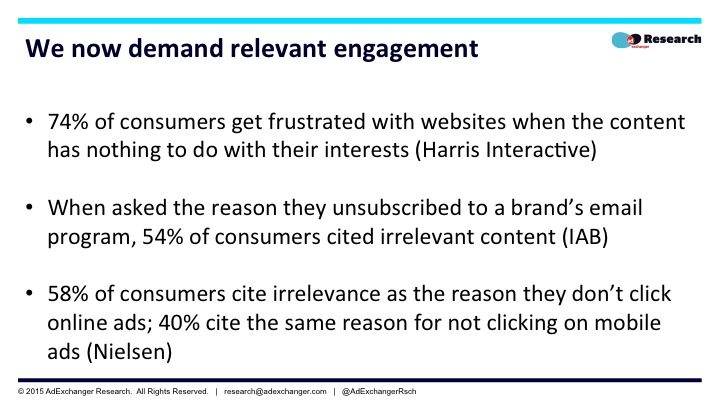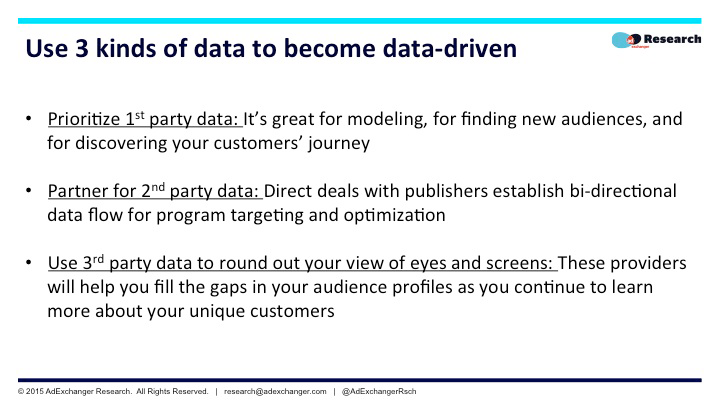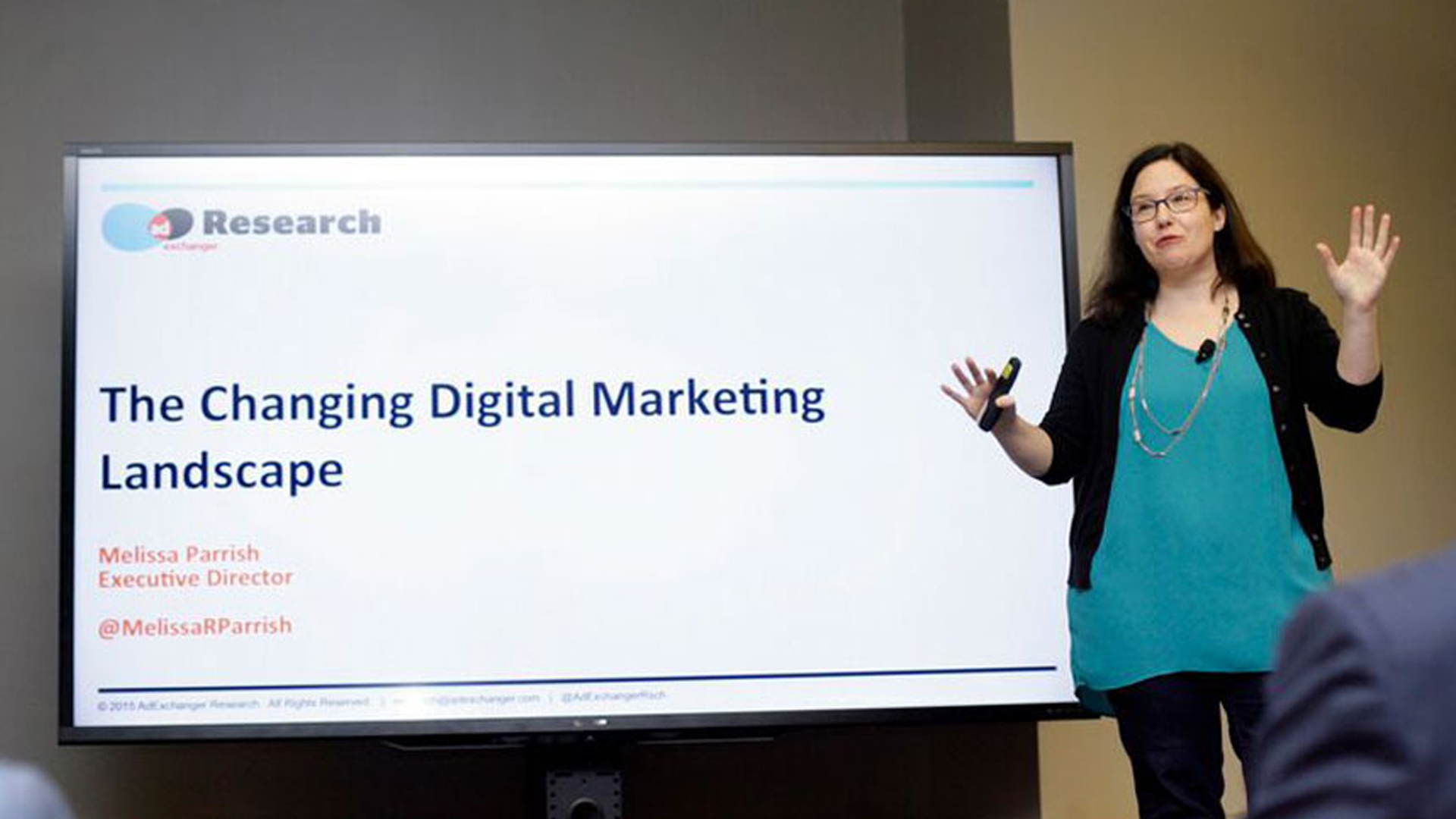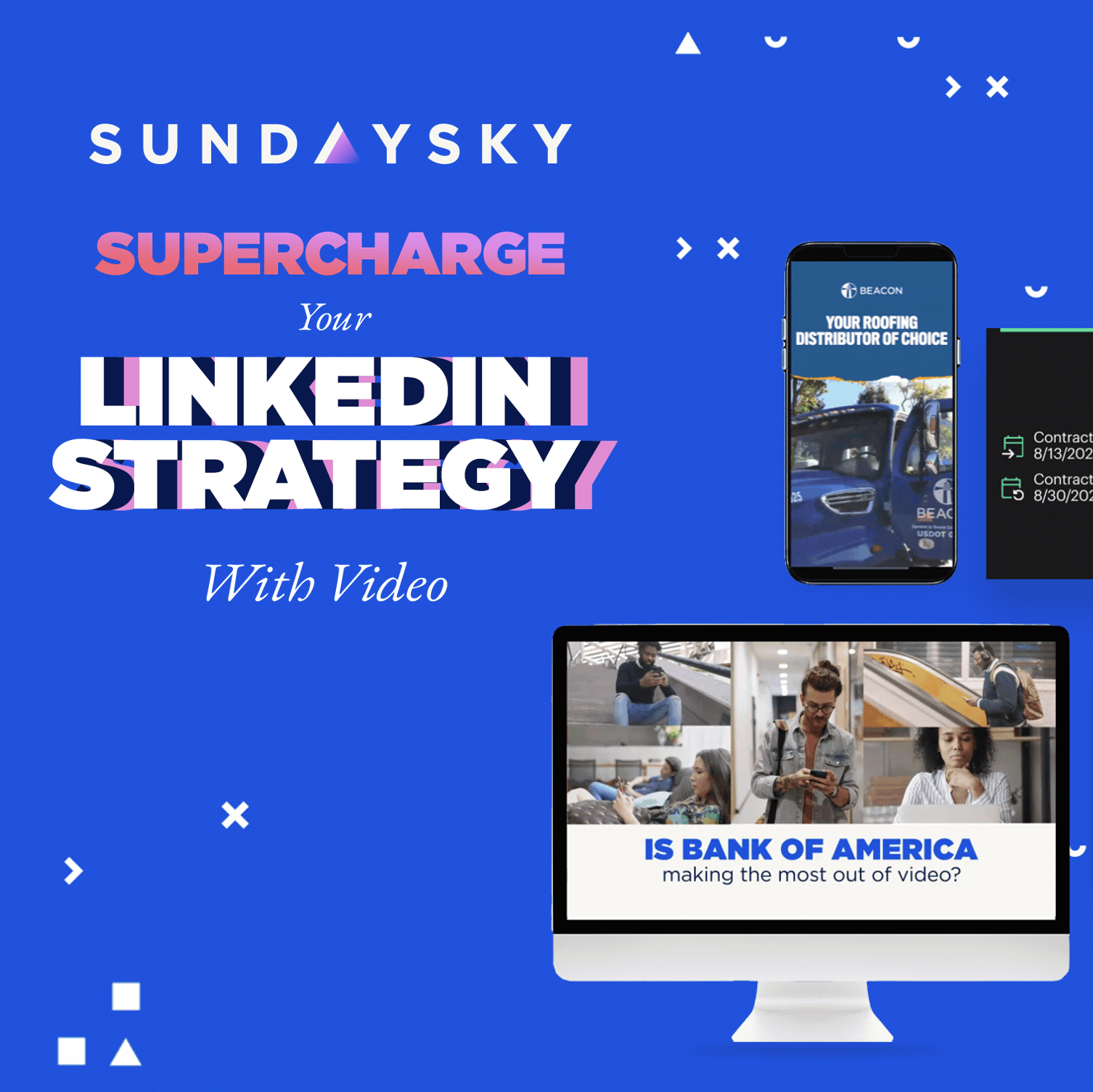
Three weeks ago, Verizon purchased AOL. Did this seem odd to you? It shouldn’t have. AOL has become a global mass media and digital distributor of content and products to both consumers and advertisers, notably in the form of digital video. Now, Verizon has acquired the ability to leapfrog others in the digital marketing ecosystem, particularly in the areas of data-driven, cross-channel, personalization and digital TV. And the event couldn’t be more well-timed, because today there are too many wasted ads, too much wasted ad money and wasted consumer time, all resulting in irrelevant consumer experiences across digital and TV. “When will digital marketing reach a point where this kind of waste is decreased? Pretty soon, because of the Verizon-AOL deal,” said Melissa Parrish, industry analyst and guest keynote speaker at SundaySky’s third annual SmartVideo Summit two weeks ago.
Melissa is the executive director of AdExchanger Research, the younger sibling to editorial AdExchanger.com. We invited her to present to our audience of customer experience and marketing leaders and discuss the changing digital marketing landscape, what this evolution – include the Verizon-AOL deal – means for CMOs, and recommendations on how to prepare for it, focused on three key areas:
- Radically personal engagement
- Data driving all marketing
- Digital infiltrating traditional
Radically personal engagement: Why marketers must shift to 1:1 engagement
It’s not news that people are connected from more devices, more often, but Melissa confirmed we are now in the era of connectivity all the time. Melissa’s research shows that constant web usage and connectivity is making consumers more demanding, in which we want all the facts in the moment, to reason, analyze and make decisions, which is also why consumers demand more relevant, 1:1 engagement.

These data points and stats she shared all point to one conclusion: “We are demanding that marketers use what they know about us, to give us what we want. And if they don’t personalize, if they don’t speak directly to us and give us something that’s relevant, we’re out of there,” she stated, while emphasizing that radically personal, 1:1 engagement is not just about using the customer’s first name in an email. By moving toward 1:1 marketing, not only are consumers pleased but marketers benefit as well, in the form of higher revenue, upselling, deeper customer loyalty and bottom line results.
Data driving all marketing: How marketers can take control of their customer insights
For brands that have never taken a data-driven marketing approach in the past, today we have no choice. Before diving in headfirst, marketing leaders need to set expectations and understand their objectives, what they need it for and plan for it. The use of a data management platform (DMP) is a logical first step, yet Melissa recognizes that marketers are not using it to the fullest extent they could to share data across all functions – such as email programs, call centers, etc. – to further enrich the customer experience.
Melissa enforced marketers should prioritize 1st-party data to drive smart video campaigns, programmatic ad buys and website personalization. And also great for identifying where a campaign may have succeeded or failed without just looking at performance data from agencies. She also cautioned that more data isn’t necessarily better: Qualifying and cleaning third-party data before bringing it into the fold will help ensure brands don’t destroy the integrity of their own data, she said.

Digital infiltrating traditional: How “TV” is becoming video
Similarly to people using many devices to always be connected, they use many devices to consume more content, too. This is causing a marketing mind shift in which digital thinking is making TV advertising look more like online video: the way in which digital marketers think about campaigns is starting to permeate how traditional brand (TV) marketers think about campaigns. This shift in attitudes and changes in process is starting to drive more flexibility, deeper targeting and greater measurability.
“[In regards to the upfronts], the idea, to a digital marketer, of locking up 70% of the budget on a guess? That’s madness.” Melissa confirmed we are starting to see TV buyers demand more flexibility, similar to the way digital marketers have. CMOs must let digital infiltrate their thinking by educating themselves, exploring what their digital teams are doing and move from “did it deliver?” to “how did it perform?”
Here are Melissa’s top five recommendations for how CMOs can achieve data-driven, 1:1 customer engagement marketing in today’s ever-changing digital and traditional marketing landscape:
- Let your unique customers’ journey guide your program and personalization development. For instance, Melissa cited a top consumer electronics brand whose online conversion rate was nearly 40% greater when the brand extended the length of time during the exploration phase on the website, before making a purchase, and let people go through the entire customer lifecycle.
- Understand – and respect – where your customers draw the line between creepy and cool. This will vary hugely depending on who the brand’s acquisition targets are versus the brand’s loyal customers. It’s important to learn about your customers and let them guide your strategies.
- Get your data house in order with a DMP. Data is the natural energy resource of marketers, fueling 1:1, personalized marketing and engagement. Melissa urged brands to identify what data streams they’ll use, how to use them, and how to take control of customer insights.
- Use three kinds of data to be data-driven. Prioritize 1st party data, partner with 2nd party data, and use 3rd party data to round out audience profiles. Ensure you don’t lose the integrity of your own 1st party customer data, which is the most valuable.
- CMOs must let digital infiltrate their thinking and shift from “did it deliver?” to “how did it perform?” Marketing programs have historically been rooted and measured in correlation numbers: “We launched a TV ad and then something positive happened.” But now digital marketers have a completely different mind set around multi-touch attribution that results in a sale, and CMOs should start to shift to that “how did it perform” thinking into traditional channels.







